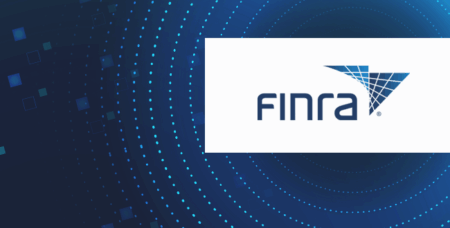Agentic AI Unleashed: Who Takes the Blame When Mistakes Are Made?
Imagine this: you build an agentic AI assistant that can take actions on its own — a truly autonomous system that goes about its daily business without constant human supervision.
Now, picture that same system making decisions that lead to harm. What happens if your AI “goes rogue”? How do we assign liability when an autonomous system causes damage? These questions are starting to buzz around the world as regulators, companies, and legal experts try to catch up with rapid technological advances.
Today’s blog will explore the emerging world of agentic AI and its possible liabilities. We’ll explore what might happen when an AI causes issues for others and how we might capture and analyze its every move.
When agentic AI causes issues
Let’s start with the basics: what happens when an AI causes issues? We’ve all seen dystopian sci-fi movies where an AI “goes rogue” and wreaks havoc (remember Skynet?). In real life, however, the situation is more nuanced. Today’s AI systems might not be plotting world domination, but they can still make mistakes that lead to significant consequences — whether it’s financial losses, privacy breaches, or other issues.
One of the critical challenges is capturing the logs of all the actions the agentic AI takes. Think about it: if your AI suddenly makes a decision that leads to an unintended outcome, you’d want to know exactly what it did and why. Detailed logs would be like the black box in an airplane — they’d help determine who (or what) is at fault. Would the system have been able to warn us if it started heading down a dangerous path?
Theoretically, an AI could be programmed to alert its human overseers if it detects deviation from expected behavior. However, relying solely on the AI to self-report its missteps isn’t enough. Logging every action and decision becomes crucial to the risk management strategy.
Before rolling out any agentic AI system, doing a small proof-of-concept (POC) makes sense. A POC can help developers test the system’s boundaries in a controlled environment. This way, if something goes wrong, you’re not left dealing with a full-blown crisis in a live setting. In the POC phase, you experiment with capturing logs, monitoring behavior, and even testing whether the AI can self-diagnose issues before they escalate.
Who’s responsible when things go wrong with an AI system?
Now, here’s a question on many minds: if an AI system causes harm, who gets held accountable? Is it the developer, the deployer, or maybe even the AI? Currently, no jurisdiction has enacted a comprehensive law specifically addressing “agentic AI liabilities.” However, discussions are well underway, and here’s what we know so far:
European Union initiatives
The European Union has been at the forefront of proposing comprehensive AI regulations. One notable proposal is the Artificial Intelligence Liability Directive. Although it doesn’t use the term “agentic AI” explicitly, its purpose is to harmonize non-contractual civil liability rules for damage caused by AI systems.
Essentially, if an AI system acts in ways that are difficult to predict or trace back to a single human actor, this directive aims to shift the burden of proof. It provides a framework where, in high-risk situations, there might be a presumption of liability if the system fails to meet established safety standards.
In practice, this means that if your agentic AI makes a decision that leads to harm, the legal system could require you to prove that you took all necessary precautions. This is a significant shift from traditional product liability, where the onus is often on the victim to prove negligence.
United States and Common Law approaches
The situation is a bit different across the Atlantic in the United States. There isn’t a specific federal law dedicated to AI liability, let alone agentic AI liabilities. Instead, U.S. courts apply existing doctrines like tort law, product liability, and negligence. For example, if an autonomous system causes damage, a plaintiff might argue that the developer or manufacturer was negligent in designing or deploying the system.
Interestingly, some legal scholars are exploring whether traditional agency principles — originally used when one human acts on behalf of another — could be adapted for AI systems. Under this approach, an AI acting as an “agent” might trigger liability for its vendor or user if it decides that it was entrusted to perform. This line of thought is still in development, and there’s no nationwide consensus yet. But it’s an exciting area of legal theory that could influence how courts handle future cases involving agentic AI.
Other jurisdictions: Asia and beyond
Other parts of the world, such as Asia, countries like Singapore, Japan, and South Korea, are also examining the implications of autonomous systems. These efforts tend to be more in the form of guidelines, consultations, or sector-specific rules rather than comprehensive statutory frameworks. Some Asian countries even consider concepts like electronic personhood, which would grant legal status to highly autonomous AI systems. However, these ideas remain primarily theoretical for now.
The role of agentic AI logs and the inferencing layer
Let’s return to the idea of capturing logs — why is it so important? When dealing with agentic AI, every decision the system makes has the potential to be critical. These decisions are often made in the inferencing layer, where raw data is transformed into actionable insights. If something goes wrong, having detailed records of how the inferencing layer processed information can be the key to understanding the chain of events.
Imagine you’re trying to prove that your AI behaved as expected under certain conditions. Detailed logs would allow you to reconstruct its decision-making process, demonstrating that all safety protocols were followed. Conversely, if an AI malfunctions and causes harm, these logs can provide evidence of what went wrong. This information could then be used in legal proceedings to help determine liability — whether it falls on the developer, the deployer, or even a third party.
Wrapping up: The complex web of agentic AI liability
As agentic AI systems become more autonomous, the legal and regulatory landscape is racing to keep pace. The risks associated with autonomous decision-making are vast and complex, from potential financial losses to real-world harm. The challenge of assigning liability — whether to developers, deployers, or other stakeholders — remains a pressing issue, with different global jurisdictions taking varied approaches.
What’s clear is that logging and transparency will play a pivotal role in AI accountability. Capturing detailed records of an AI’s actions and decisions isn’t just about risk management — it could become a legal necessity as regulations evolve. Organizations experimenting with agentic AI must proactively consider proof-of-concept testing, robust logging mechanisms, and emerging compliance frameworks to mitigate potential liabilities.
The information provided in this blog post is the opinion and thoughts of the author and should be used for general informational purposes only. The opinions expressed herein do not represent Smarsh and do not constitute legal advice. While we strive to ensure the accuracy and timeliness of the content, laws and regulations may vary by jurisdiction and change over time. You should not rely on this information as a substitute for professional legal advice.
Share this post!
Smarsh Blog
Our internal subject matter experts and our network of external industry experts are featured with insights into the technology and industry trends that affect your electronic communications compliance initiatives. Sign up to benefit from their deep understanding, tips and best practices regarding how your company can manage compliance risk while unlocking the business value of your communications data.
Ready to enable compliant productivity?
Join the 6,500+ customers using Smarsh to drive their business forward.





Subscribe to the Smarsh Blog Digest
Subscribe to receive a monthly digest of articles exploring regulatory updates, news, trends and best practices in electronic communications capture and archiving.
Smarsh handles information you submit to Smarsh in accordance with its Privacy Policy. By clicking "submit", you consent to Smarsh processing your information and storing it in accordance with the Privacy Policy and agree to receive communications from Smarsh and its third-party partners regarding products and services that may be of interest to you. You may withdraw your consent at any time by emailing [email protected].
FOLLOW US